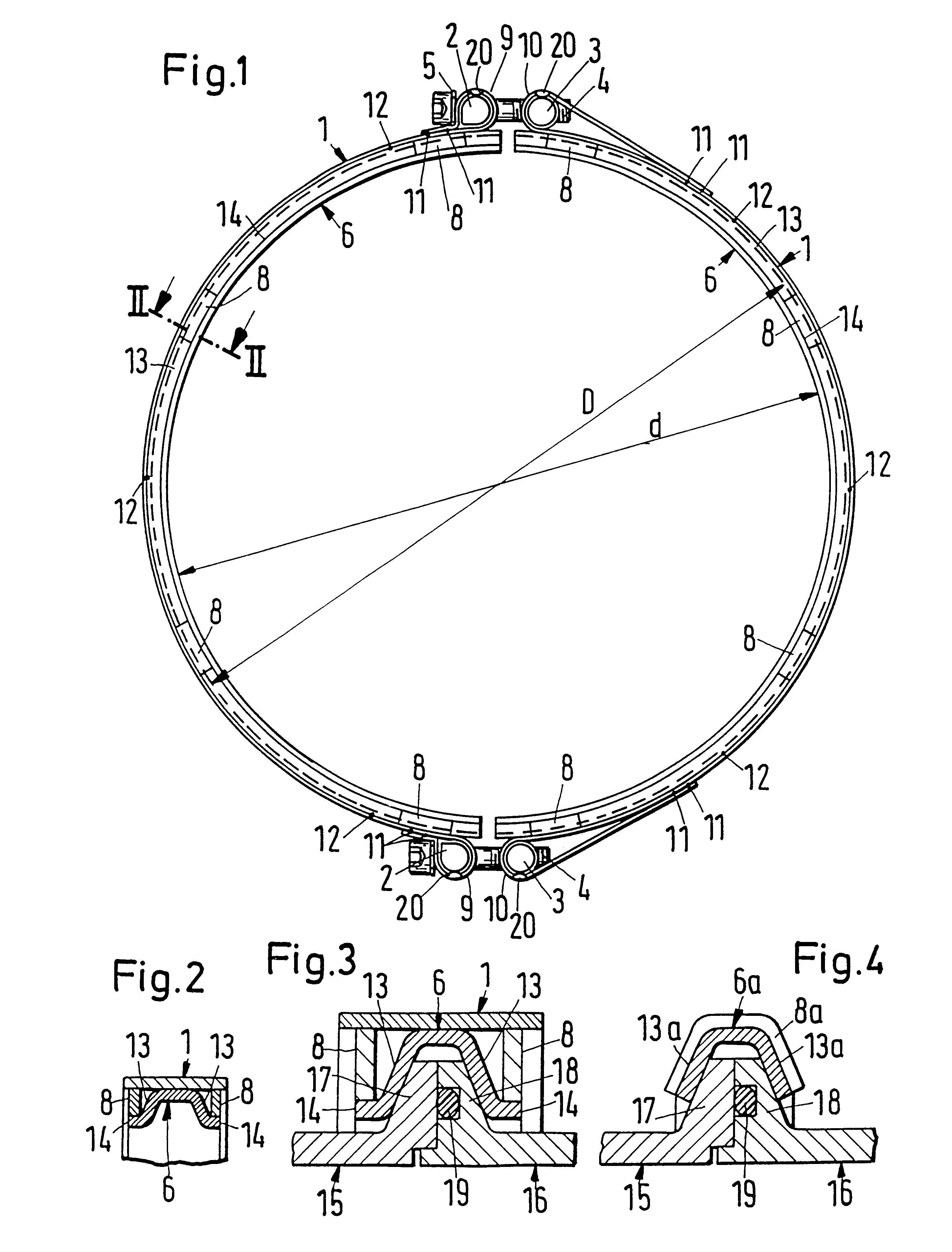Profile clamp and method for manufacturing a profile clamp
a technology of profile clamps and profiles, applied in the field of profile clamps, can solve the problems of low production efficiency, low stability of steel profile clamps at relatively high temperatures, and loss of elasticity at high temperatures
- Summary
- Abstract
- Description
- Claims
- Application Information
AI Technical Summary
Benefits of technology
Problems solved by technology
Method used
Image
Examples
Embodiment Construction
Referring now to FIGS. 1-3, a profile clamp according to the present invention is illustrated. The profile clamp includes two approximately semicircular clamping bands 1, four bolts 2, 3, two clamping bolts 4, two plain washers 5, two approximately semicircular ring segments 6 and a plurality of reinforcements, which are preferably in the form of sheet metal strips 8. Sheet metal strips 8 are distributed over the circumference of the clamp on both sides of the circular ring segments 6. Each clamping band 1 has end sections that are bent radially outwardly and back to form loops 9. The ends of the clamping band 1 are welded by, for example, projection welds 11, to the clamping band 1 to maintain the shape of the loops 9, 10. One bolt 2, 3 is placed within each loop 9, 10. Each loop 9, 10 has a slit extending around a major portion of the respective bolts 2, 3. One of the headed clamping bolts 4 has its shaft extend through the slits within the loops 9, 10. The shaft of bolt 4 also ex...
PUM
| Property | Measurement | Unit |
|---|---|---|
| Temperature | aaaaa | aaaaa |
| Temperature | aaaaa | aaaaa |
| Length | aaaaa | aaaaa |
Abstract
Description
Claims
Application Information
 Login to View More
Login to View More - R&D
- Intellectual Property
- Life Sciences
- Materials
- Tech Scout
- Unparalleled Data Quality
- Higher Quality Content
- 60% Fewer Hallucinations
Browse by: Latest US Patents, China's latest patents, Technical Efficacy Thesaurus, Application Domain, Technology Topic, Popular Technical Reports.
© 2025 PatSnap. All rights reserved.Legal|Privacy policy|Modern Slavery Act Transparency Statement|Sitemap|About US| Contact US: help@patsnap.com


